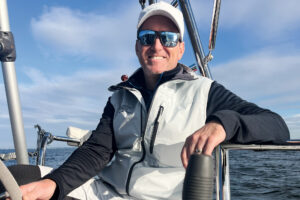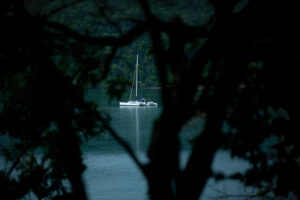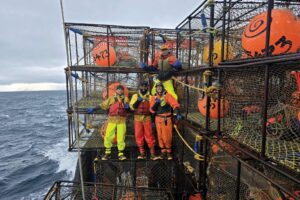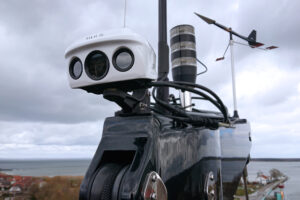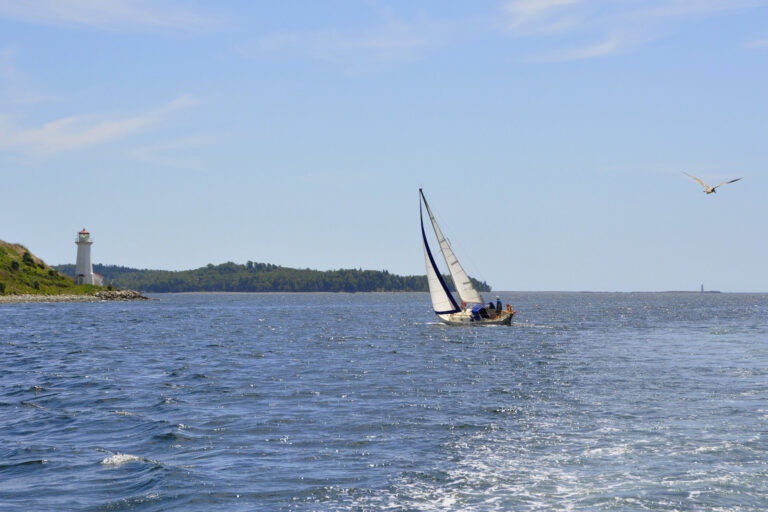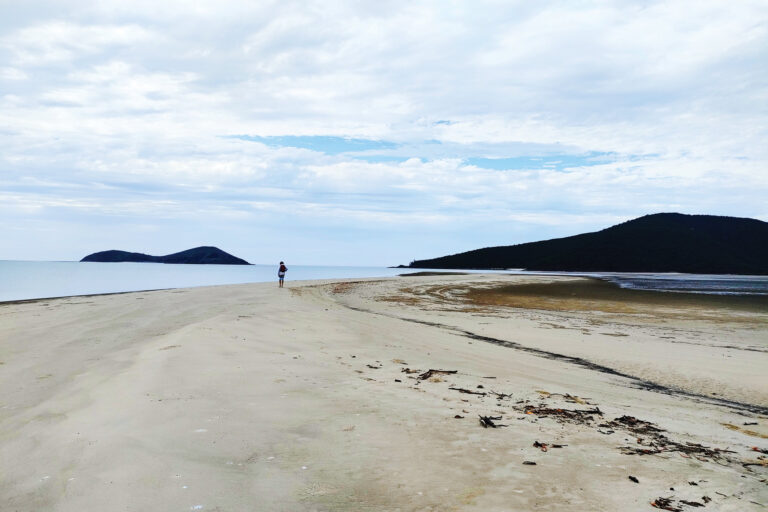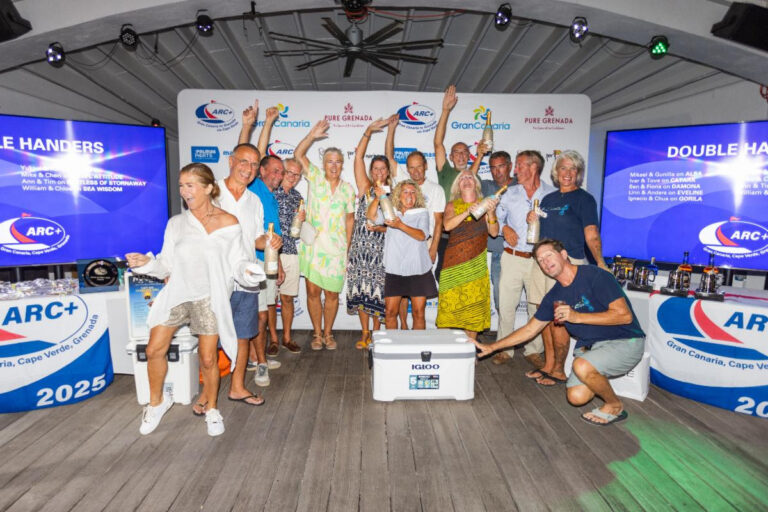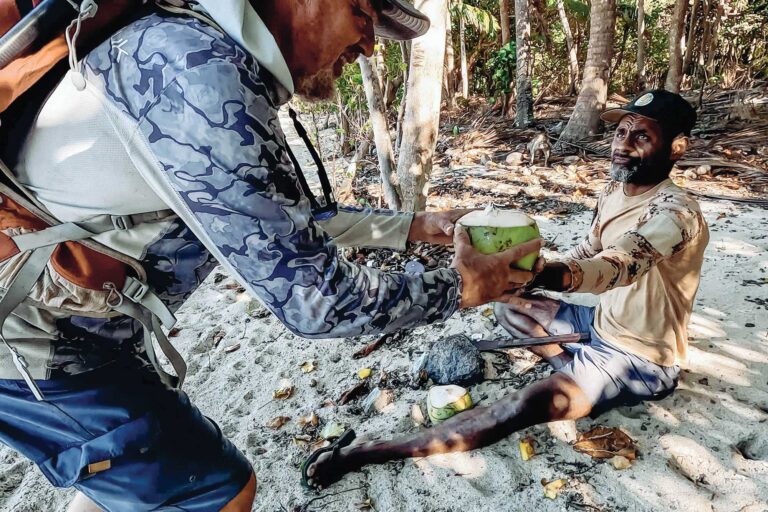“Water, water, everywhere, / And all the boards did shrink; / Water, water, everywhere, / Nor any drop to drink.” Fortunately, since Samuel Taylor Coleridge wrote The Rime of the Ancient Mariner in 1798, technology has provided us with a number of methods for converting seawater into the potable water we need to sustain life, including reverse osmosis, the method that many cruisers use.
Before we discuss the details of how an RO system works to produce drinkable water, let’s consider what’s in seawater and why drinking it in place of freshwater can kill you.
Each kilogram of seawater contains about 35 grams of various dissolved elements, including chloride (about 19 grams), sodium (10.5 grams), sulfate (2.5 grams), magnesium (1 grams), and about .04 grams of calcium and potassium. These elements are a necessary part of our diet, so why will consuming them by drinking seawater be harmful, if not fatal? Most of us have swallowed enough seawater to know that it isn’t poisonous.
The likelihood of harm (or, in the extreme, death) from drinking seawater in place of freshwater is a result of what the seawater does in our gut, where it engages in the natural process of osmosis, the movement of water molecules through a permeable membrane from an area of low salt concentration to an area of high salt concentration. The force that causes the flow of molecules is called osmotic pressure, and it allows the cells in our bodies to receive nutrients and discharge wastes. The fluid in our bodies is comprised largely of water in an isotonic state (a state characterized by equal amounts of salt throughout), and the movement of this fluid into and out of our cells doesn’t change the volume of the cells. The ingestion of seawater creates a high-salt solution in the stomach. Water from the surrounding cells will flow through the cell membrane into the high-salt seawater, dehydrating and shrinking the cells to the point where they’re damaged or destroyed. Rather than quenching our thirst and adding fluid to the body, drinking seawater or any other high-salt solution dehydrates the body.
How RO Works
We can obtain potable water-water that has an acceptably low concentration of dissolved salts-by reversing the osmotic flow, forcing water molecules to move through a permeable membrane that blocks the passage of the dissolved salts. To make reverse osmosis work, we need both a pump capable of creating a pressure greater than the osmotic pressure of water and a membrane permeable to water but fine enough to stop the flow of the salt particles. Note: If your foul-weather gear is made of Gore-Tex, you’re wearing a hydrophobic permeable membrane that operates at normal (direct) osmotic pressure. It allows the passage of water vapor from within the garment to the outside, while its minute pores largely prevent liquid water from penetrating into the interior of the waterproof, breathable suit.
The pressure needed to force the water molecules through the separation membrane varies with the temperature of the seawater but is typically about 800 pounds per square inch. Two different types of pumps are used in sailboat RO systems: electric-motor-driven plunger pumps similar to those used in pressure washers (but made with materials that can withstand constant exposure to seawater) and hydraulic amplifiers, pumps that amplify relatively low-pressure seawater and obtain the pressure required for successful RO operation. Each type offers advantages and disadvantages.
The other key element of the RO system, the salt-separation membrane, must be semi-permeable, its pores too small to allow the passage of anything other than water molecules. The membrane used in an RO system is typically cylindrical, consisting of an external pressure-resistant housing with three fluid fittings: a pressurized seawater input, a freshwater or product-water delivery, and brine or waste-water output. The RO membrane consists of microscopically thin layers of polymer wound on a support tube. The membrane used in seawater RO systems is usually made of a TFC (thin film composite) membrane consisting of three layers: a polyester support web, a microporous polysulfone interlayer, and an ultra-thin polyamide barrier layer.
Even though the pores in the RO membrane are small enough to stop the passage of bacteria, viruses may pass through an imperfection in the membrane surface. Many RO installations therefore include an ultraviolet sterilizing unit that kills any viruses in the freshwater before it’s delivered to the sailboat’s water tank.
A typical sailboat RO system consists of three major sections: the seawater supply and preliminary filtration, a high-pressure pump, and the RO membrane. Depending on the design of the system, either manual or electrically operated valves are used to control the flow of water through the system. About 10 gallons of seawater at high pressure are delivered to the RO membrane for each gallon of freshwater produced. The fluid discharged back into the sea is referred to as brine.
A salinity test device gauges the potability of the freshwater by measuring its electrical conductivity. When the system is started, the product water is diverted overboard until the salinity monitor verifies that it’s sufficiently free of salts.
Filters
The seawater-supply system must trap any particulate matter that could damage the precisely made parts of the high-pressure pump. Most systems use two filters, which are fitted with progressively finer filter elements. The performance of the RO membrane can be degraded by oil, so many systems also include a separate oil-elimination filter. A low-pressure feed pump for water is usually included in the seawater-supply system to ensure that the high-pressure pump is always supplied with an adequate flow of water.
The life span of an RO membrane on a sailboat, where the system may be left dormant for relatively long periods of time, often depends on how well the system is managed when not in use. In the past, it was necessary to use special chemical cleaning processes if the system wasn’t to be used for more than a few weeks. Most of today’s RO systems incorporate a membrane-flushing system that pumps freshwater from the boat’s water tank through the system about once a week when the system isn’t in use. The freshwater flush displaces the salt water in the system, reducing corrosion and fouling.
However, systems that are to remain out of service for prolonged periods of time should be flushed with a biocide, typically sodium bisulfite, a process known as pickling. Each manufacturer will suggest the length of time before the chemical pickling process is needed. Cleaning is done by introducing an alkaline treatment that removes biological fouling from the surface of the membrane, then adding an acidic cleaner that removes calcium carbonate and other mineral deposits. With careful attention to the prefilters and periodic flushing with fresh, chlorine-free water from your tank, membrane life can be about five years, with double that life possible in the best-managed and frequently used systems.
The power drain and cost of an RO system varies directly with the amount of freshwater produced per hour. Water production from systems suitable for sailboat use can range from a few to more than 100 gallons per hour. Once you experience the pleasure of having a virtually unlimited supply of freshwater, you’ll find a use for a surprisingly large amount. Some years ago, while sailing on a friend’s 88-foot ketch, we enjoyed the luxury of being able to wash down the anchor chain with freshwater before it entered the chain locker. The usually nasty and malodorous chain locker was dramatically transformed.
RO systems, like everything else on a sailboat, require routine maintenance. Prefilter elements will have to be changed when they become clogged and impede the flow of water to the high-pressure pump. Both the low-pressure feed pump and the high-pressure pump will require occasional service. High-pressure-pump service may include changing lubricating oil and replacing seals after about 500 hours. New high-pressure pumps used on some systems, by comparison, don’t require oil changes and can operate for 8,000 hours before requiring maintenance. Systems on sailboats that may be exposed to freezing temperatures will have to be serviced with nontoxic, propylene glycol antifreeze prior to storage.
Once you have an RO system on your boat, it’s easy to become accustomed to having all the freshwater you want immediately at hand. However, if you’re on a long voyage, it’s prudent to have more than one water-storage tank and to always keep the tanks quite full. Although in principle the operation of the RO system is straightforward, the equipment is complex. You’ll want to carry the spares recommended by the manufacturer and to understand as much as possible about how your system works so you can troubleshoot and repair it, if need be. If you maintain your watermaker regularly, you’ll never need to suffer like Coleridge’s thirsty sailor.
Powering the RO System
It takes energy to pump water at high pressure. Most of the power consumed in an RO system is used to power the high-pressure pump. Large-capacity systems are typically powered with 120- or 220-volt-AC motors and can require generators capable of delivering at least 3 to 4 kilowatts (to handle the motor starting load). Less capacious systems can be driven with 12- or 24-volt-DC motors, making them more suitable for typical cruising boats. Selecting the optimum system requires consideration of the vessel’s power capability and the number of hours per day the system will have to be operated to provide the desired quantity of water. Sailors like to sail, preferably without operating the auxiliary engine for hours on end. It’s worth taking the time to do a total energy evaluation to determine how many hours of engine or genset operation will be required to provide the energy needed for refrigeration, the watermaker, and the boat’s electronics.
It’s possible to power an RO system’s high-pressure pump directly from the propulsion or genset engine, bypassing the need for electricity; however, this type of installation will require custom engineering.
High-Pressure-Pump Alternatives
A crankshaft-driven plunger pump is used in some sailboat RO systems. The newest technology, a radial-axial plunger pump, is used in most of the systems sold today. The size and number of plungers are matched to the amount of water required by the system.
Some watermakers use a pump that operates on the principle of a hydraulic amplifier. An electrically powered pump capable of delivering seawater at 75 to 100 psi feeds a pumping chamber containing a large-diameter piston that’s directly connected to a second pumping chamber containing a piston whose diameter is about one-tenth that of the piston in the input pumping chamber. The pressure of the water delivered by the small-diameter piston will be in proportion to the inverse of the ratio of the piston diameters; in this example, it’s 10 times that of the input pressure from the electrically driven pump. The two companies producing these “energy-recovery” type of RO systems are Sea Recovery and Spectra. This design approach allows the use of small, relatively high-volume, modest-pressure, 12-volt-DC pumps in place of the conventional direct high-pressure approach, and this can reduce total energy requirements by up to 75 percent. Water-making capacities range from about 6 to as much as 75 gallons per hour.
Manufacturers of Reverse-Osmosis Watermakers
Aqua Marine: (360) 376-3091, www.aquamarineinc.net
FCI Watermakers: (714) 850-0123, www.filtrationconcepts.com
Horizon Reverse Osmosis (HRO): (310) 631-6300, www.hrosystems.com
Matrix: (954) 524-5120, www.matrix-utilities.com
Offshore Marine Labs: (954) 524-5433, www.offshore-marine.com
Quality Waterworks: (336) 924-8966, www.qwwinc.com
Sea Recovery: (310) 637-3400, www.searecovery.com
SK Watermakers: (772) 569-3000, www.skwatermakers.net
Spectra Watermakers: (415) 526-2780, www.spectrawatermakers.com
Village Marine Tec: (310) 516-9911, www.villagemarine.com
Watermakers Inc.: (954) 467-8920, www.watermakers.com
Chuck Husick is a pilot, a licensed captain, an electrical engineer who worked on the Gemini space program, and the owner of a 46-foot ketch.

